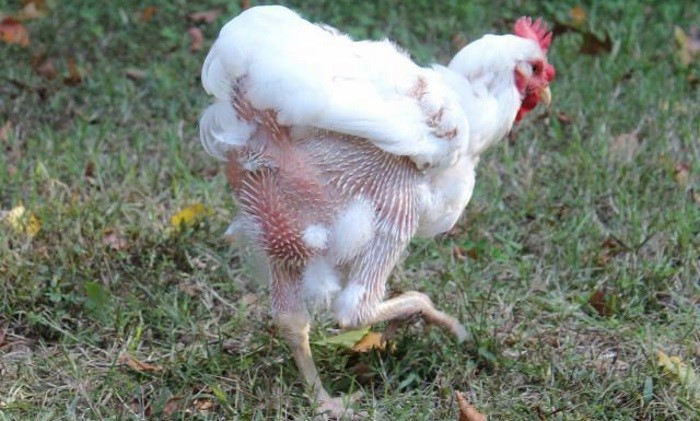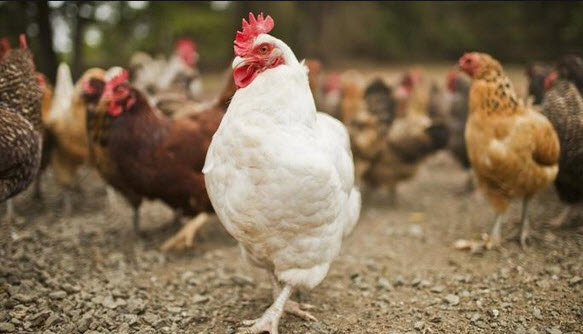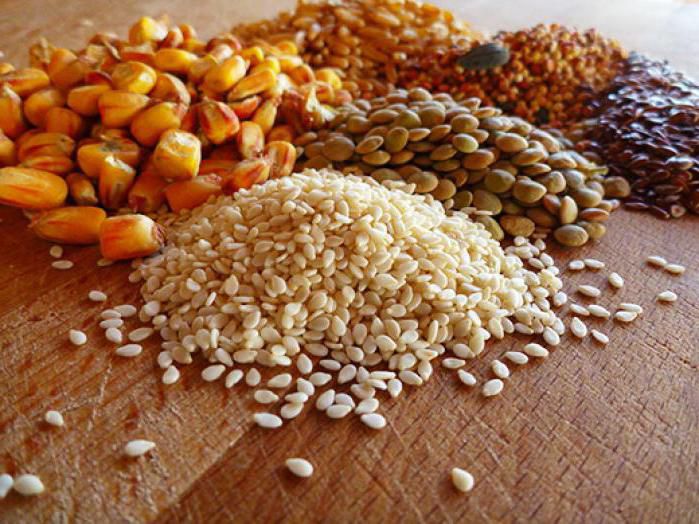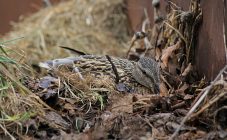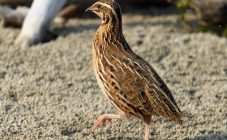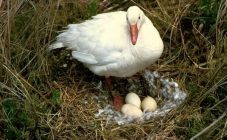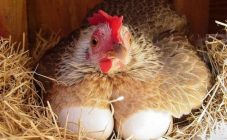Content:
Very often one has to observe how chickens walk around the courtyard, whose plumage is practically absent, or only small fluff remains on them. Inexperienced poultry farmers are immediately alarmed, asking the question: "why do chickens molt in summer?" And they begin to look for the cause of this phenomenon. In most cases, molting is a natural process. But there are times when birds shed their "clothes" as a result of illness. They also induce artificial molt in poultry farms. What it is and why is it needed, we will figure it out in this article.
What is molting
Moulting in laying hens is a process that is laid down by nature. Thanks to him, they shed their old plumage and overgrow with new ones.
Since old feathers give in to friction with age, fade and wear out, nature has made sure that there is an opportunity to grow new ones. The feathers on the head and neck fall first, as these are the parts that move the most. Next comes the turn of the back, since it is this part that is constantly under the influence of sunlight. Further - descend from the chest and tail.
When molt begins, birds lose weight and stop rushing. At the site of the future plumage, first tubercles appear, which are permeated with blood vessels. Soon, small tubes will appear from these tubercles, from which feathers subsequently grow. During this period, the skin becomes very sensitive, with a slight injury to the tube, blood begins to ooze from it. Therefore, laying hens, while molting, try to avoid contact, both with people and with other animals. They hide from everyone in quiet places where they will be invisible.
When chickens molt
Many owners are interested in the question: "when do hens molt?" During the first year of a chicken's life, several such periods occur:
- After the young chicks are four weeks old, the first molt occurs. At this time, the first fluff is discarded and a new one begins to grow.
- When the young are three months old, they again change their plumage. This time, contour feathers grow, such as those worn by adult birds.
- In spring, pullets molt again.
In the fall, chickens tend to change their feathers every year. Many are interested in the questions: "How many days and when will chickens moult?" It should be remembered that in those individuals that are very productive, feathers fall out much more intensively. It is common for them to replace old ones with new ones for six or eight weeks.
Laying hens, which run very badly throughout the year, molt from the summer, from July to August. Molting continues for several months. This goes unnoticed, as they constantly walk in dense plumage.
If the plumage of chickens changes for a long time, in addition, they become lethargic and slow, this is the first sign that you need to monitor the chicken's health and take action. The animals are sick or have suffered severe stress. A stressful situation for hens can occur:
- as a result of the lack of water, which is why the bird is constantly thirsty;
- chickens are hungry and must get food for themselves to live;
- in winter, layers receive little light.
Chickens tend to change their plumage in the summer when they hatch the chicks. When they return to their normal diet, new feathers begin to actively grow. Other reasons why birds begin to molt may be the following:
- with food, the microelements necessary for development do not enter the body of the laying hen;
- lack of vitamins in the body;
- attack of parasites that bite down the plumage;
- the emergence of parasitic worms;
- diseases affecting the skin and intestines.
Once the reasons for untimely molting are identified, they can be eliminated quickly and in a timely manner. It is necessary to immediately eliminate the stressful situation. To do this, you need to ensure that the birds constantly have enough water and food. In winter, you need to extend daylight hours with artificial lighting. Lighting is recommended for chickens for at least fifteen hours. If you eliminate all these reasons, then they will stop shedding.
Seasonal periods
Birds can shed when climatic conditions change. There are four types of molt, depending on the season:
- In the spring, chickens can shed feathers they do not need. This process begins in the month of March or April.
- In summer, feathers fall out of chickens when the body malfunctions and it ceases to function correctly. The housekeeper should be aware that summer molt is the first sign of bird disease. This period falls in July and lasts no more than a month.
- In autumn, this is the most necessary process in the chicken's body. It begins in late August or early September and lasts for fifty-five days. In winter, the chickens will already have thick and lush plumage.
- In winter, this is the most unnatural process, since the cold season should not provoke feather loss. If this happens, then you should pay attention to the condition of the birds and their health.
Why do forced molting
In poultry farms, layers are forced to shed their old plumage in an artificial way. They begin to do this for the first time to those individuals who are at least thirty weeks old. Thus, they extend the period of their productivity. Forcing a hen to shed its plumage is much more profitable than raising young.
.
To artificially induce a change in plumage, it is necessary to create a stressful situation. To do this, they arrange a small hunger strike with the animals without drinking. Leave the living creatures in the house, which is shaded to reduce daylight hours.
It should be noted that it is the hunger strike that has the greatest impact on molting. They arrange it for one or two weeks. The hunger strike should correspond to how much the chicken needs to lose weight. Also, this process has an impact on the time that the laying hen stops laying.
There are two modes of hunger strike:
- The first is in the case when the weight of the chicken is much higher than allowed by the standards. In this case, a tough hunger strike is applied.
- For already thin chickens, fasting is prescribed sparing.
A bird that has been starving for a long period lays much later, but as a result it will be more productive and will lay eggs much longer.
At home, changing feathers is also very important, because, thanks to it, the layer grows and develops. In addition, it significantly rejuvenates, has excellent health, and improves health. Then you need to create good conditions for the bird, under which it will almost painlessly endure the change of plumage. It is necessary to constantly provide birds with food and water. Do not forget about the mineral elements and vitamins necessary for the chicken's body.
Thanks to these conditions, the laying hen will perform even better at the end of the molt. At the same time, she will become very beautiful and well-groomed. The new feathers will be clean and fluffy. Thus, she will protect herself from cold and frost on harsh winter days.
How to speed up the shedding process
The molting period depends on how healthy the hen is. For a perfectly healthy laying hen, it is normal for feather changes to occur within ten weeks. For birds lagging behind in development, this process increases to fourteen weeks. With proper laying hens, shedding can be reduced to at least five weeks.
In this case, experts recommend adding special additives to feed, which contain the required amount of minerals and vitamins. And also isolate molting individuals from other birds and protect them from drafts.
Plumage change is necessary for chickens, but on condition that it occurs in the fall. Only during this period chickens rejuvenate their bodies and prepare for winter.
